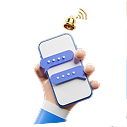 by Nadine Mohamed
by Nadine Mohamed
Submitting your UCAS application is a huge step in your academic journey—but it’s only the beginning. Once you click “submit,” your application enters a structured, multi-phase process that determines your path to university admission in the UK.
From tracking your application to responding to offers, and from interviews to Clearing, this guide walks you through every key milestone to help you make informed decisions and stay organized after submission.
1. Immediate Confirmation and Access to UCAS Hub
After submitting your UCAS application, you’ll receive a confirmation email. This includes your UCAS application number and login details for the UCAS Hub, the central online system where you can:
- • Track your application status
- • Monitor responses from universities
- • Update your contact details
- • Access important announcements
Important Tips:
- • Check your inbox regularly, including your spam/junk folder
- • Bookmark the UCAS Hub for easy access
- • Keep your login details secure
Each university you applied to will now independently begin reviewing your application, and you may receive updates at different times from each.
2. University Review: Evaluation and Additional Requirements
Once universities receive your application, they begin evaluating several components:
- • Your academic qualifications
- • The personal statement
- • Your reference or teacher recommendation
- • Any relevant work experience or extracurriculars
Additional Requirements for Some Courses:
Certain courses—such as medicine, dentistry, law, engineering, or creative arts—may require:
- • Admissions tests (e.g., UCAT, LNAT, BMAT)
- • Interviews (especially for medicine, usually between December and March)
- • Portfolios (for design, architecture, or art)
- • Auditions (for music, dance, or drama programs)
If you're invited for an interview or assessment, treat it as an important opportunity—not only to impress, but to ask questions, understand the program more deeply, and demonstrate interest.
3. Receiving and Responding to University Offers
After reviewing your application, each university will respond with one of the following decisions:
Types of Offers:
- • Unconditional Offer: You have already met the entry requirements. Your place is secured.
- • Conditional Offer: You must meet certain conditions (e.g., A-level grades, exam scores) before your place is confirmed.
- • Unsuccessful/Rejection: Your application was not successful, either due to competition or unmet requirements.
What Happens Next?
Once you’ve received decisions from all your choices, you must select:
- • Firm Choice: Your first-choice university
- • Insurance Choice: Your backup (usually with lower entry requirements)
You must respond to offers by a specific deadline, which will appear on your UCAS Hub. Failing to respond by the deadline can result in losing your offers.
4. Applying for Student Finance
While waiting for university decisions, you should begin applying for student finance if you're eligible. This is handled separately from UCAS and depends on whether you are a:
- • A UK student applying for Student Finance England, Wales, Scotland, or Northern Ireland
- • International students applying for scholarships or financial aid offered by individual universities
Tips:
- • Apply early to avoid delays in receiving funds
- • Gather required documents: proof of identity, income info (for means-tested support), course info
- • Universities often offer guidance on financing options and budgeting resources
5. Planning Accommodation and University Life
Once you’ve accepted an offer, you can begin preparing for life at university. Key areas to consider include:
- • Accommodation: University halls or private housing
- • Orientation Programs: Welcome weeks, campus tours, student union events
- • Budgeting: Cost of living, textbooks, transport
- • Academic Prep: Reading lists, supplies, software
Start looking into student support services offered by your chosen university, such as academic advising, counseling, career services, and disability support.
6. UCAS Extra: A Second Chance to Apply
If you don’t receive any offers or reject all your options, UCAS Extra allows you to:
- • Apply to additional courses one at a time
- • Run from late February to early July
- • Be available only if you've used all five choices and have no offers
This can be a valuable second opportunity to find a course that’s right for you without waiting until Clearing.
7. UCAS Clearing: Filling Available University Places
Clearing is a system that opens in early July and runs through mid-October. It helps students who:
- • Didn’t receive or accept any offers
- • Didn’t meet the conditions of their offers
- • Applied after June 30 (late applicants)
- • Changed their mind about their course or university
How It Works:
- • Check available courses on the UCAS website
- • Contact universities directly to discuss vacancies
- • Add a Clearing choice in your UCAS Hub once a university agrees to offer you a place
Thousands of students successfully secure places through Clearing each year. It’s important to stay calm and proactive during this time.
8. Results Day: Confirming Your Place
A-level Results Day (usually in August) is the moment when your conditional offers either become confirmed or not.
If You Meet the Conditions:
- • Your place will be automatically confirmed
- • UCAS Hub will update your status
- • You’ll receive a formal offer of acceptance from the university
If You Miss the Conditions:
- • The university may still accept you
- • Otherwise, you may enter Clearing to find another course
Make sure you’re available on results day to respond quickly to any developments or offers.
9. Key Dates and Milestones After Submission
After submitting your UCAS application, you’ll receive a confirmation email and gain access to the UCAS Hub right away. Between December and March, some applicants may be invited to attend interviews or assessments, depending on the course. From February through May, universities begin sending out offers or rejections. If you don’t receive an offer or want to apply elsewhere, UCAS Extra opens between late February and early July, allowing additional applications.
Between May and June, you’ll need to reply to your offers—specific deadlines depend on when you received them. Clearing opens from July to October, providing another opportunity to find a place if you’re not holding any offers. August brings Results Day, where you’ll confirm your place or use Clearing to explore other options. Finally, September marks the last chance for late applicants to submit their UCAS application. Keep a printed or digital copy of this timeline to stay on track and avoid missing any important deadlines.
10. Final Steps: Preparing to Enroll
Once your place is confirmed, you’ll begin receiving enrollment instructions from your university. These may include:
- • Registering for classes
- • Submitting documentation (e.g., transcripts, ID, immunizations)
- • Accessing your university email and learning platforms
- • Booking orientation activities
You’ll also receive details about your accommodation, student card, arrival dates, and any pre-reading required for your course.
From Application to Admission
The journey doesn’t end with submitting your UCAS application—it begins there. Navigating the post-submission phase requires awareness, organization, and active decision-making.
Whether you're preparing for interviews, responding to offers, applying through Extra or Clearing, or confirming your place after results day, every step matters. By following this timeline and making informed decisions along the way, you’re not only ensuring a smooth transition to university but also laying the foundation for academic and personal success.
Are you ready to get started and study abroad? Just browse through more than 110,000 diverse programs worldwide,and Educatly offers a diverse array of educational opportunities tailored to your interests and career goals.
Signing up is easy! Simply create a profile and explore our extensive database to find the perfect program for you. Whether you're drawn to renowned universities in bustling cities or serene campuses in scenic locations, Educatly ensures you'll find a match that suits your aspirations.
To receive personalized guidance every step of the way, schedule a free consultation with one of our experienced educational advisors. They're dedicated to helping you navigate the application process, understand visa requirements, and secure scholarships or financial aid, ensuring you access top-tier educational opportunities with confidence.
Read More: Top 5 World-Wide Accepted English Tests for Studying Abroad




 Yes
Yes No
No